Key Considerations
That said, the two things you want to consider when selecting a tech toe are:
- the lateral holding power (see table below),
derived largely from the springs used under the toe arms or jaws. - how easy the binding is to get in to.
Ease of Entry
What IS perceptible is how easily you can step in to the toe. There are four things affecting this:
- Pin spacing when open
- The fulcrum point of the pin “arms”
- Spring rate (stiffness)
- Alignment guides
Pin spacing and alignment tabs help with positioning the boot for closing the pins on. Alignment tabs help position the boot fore and aft; when the front of the boot butts up against the tabs the boot is positioned longitudinally. The closer the pins are when open, the easier it is to adjust the angle of the boot so it is perpendicular to a line connecting the pins when you step down.
The other thing that helps, given that the boot is properly aligned, is how quickly the pins close down on the inserts. The further apart they are, or the harder you need to push down to close the pins, the more likely you are to twist the boot as the pins close and miss one or both inserts. The faster the closure rate, the less time you have to wiggle the boot. That’s why G3’s Ion and Zed or Fritschi’s Vipec Evo are neck and neck as the easiest tech toes to get in to, but only the Ion/Zed is a realistic candidate as a telemark tech toe.Marker’s Kingpin (and unproven Alpinist) and Dynafit toes with the “power towers” (Radical 1.0, Rotation, etc.) are not far behind. The Salomon binding (manufactured by Plum) has a really strong spring with a slow closure rate, but their wide alignment bar helps keep the boot steady when stepping in. After that you have a plethora of classic Dynafiddle toes, ones that require you to learn how to put a pin in one insert and then skillfully rotate your boot down till it connects with the other side. It’s not an insurmountable skill to acquire, but you will occasionally still have moments of frustration when your step-in fiddle feels out of tune. Of these legacy style toes, the OMG toe requires the greatest “fiddling” proficiency.
There are bound to be many new developments in tech toes after the publication of this article. Use the criteria above when determining what toe to use for building your own DIY TTS binding, and ask around.
Relative Performance Comparison (circa 2017)
| Manufacturer | Model | Relative Pin Force | Relative Ease of Entry |
| Yak | Plum | #1 (strongest) | 4th |
| Salomon | MTN PIN | #1 (est. tie) | 3rd |
| G3 | Ion 12 | #2 | 1st (easiest) |
| Marker | Kingpin 13 | #3 | 2nd |
| The-M-Equip. | Meidjo | #4 (est.) | 2nd |
| Dynafit | Vertical | #5 | 4th |
| Dynafit | Radical v1.0 | #6 | 2nd |
| OMG | TTS | #7 (est.) | 5th |
[Note: Fritschi’s Vipec toe is not included in the list above for at least two reasons. First, the pins can and will slide laterally without opening. They’re designed to do that to work with a heel that does not rotate, yielding lateral release at the toe like the majority of alpine bindings. Secondly, the release tension comes from a spring behind the pins inside the toe housing that extends back to where currently available cable systems would connect. Another contender for a PhD in telenurd absurdity.
Dynafit’s Radical 2.0 toe is not included because it allows for rotational movement of the heel. Cursory analysis suggests this will yield poor lateral control while telemarking.
The toes with “estimated” retention force were not measured by Lou Dawson, but are estimated by the author based on field tests. ]
“Safety” Release
Experienced telemarkers know that safety release does not guarantee satisfaction. Premature release is generally worse and the forces between boots and bindings while telemarking are pretty high when you’re in-control, significantly higher than alpine skiers when they’ve lost control. Thus strong springs are recommended, although experience has shown that almost any of these toes is sufficiently strong to hold when telemarking in control. It is when you’re on the fringes that things get less reliable. In that case, I suggest relying on luck, with a prayer of faith thrown in for good measure. When in doubt, lock ‘em out, meaning, you can increase retention force exponentially by blocking the arms from opening with the toe lever. This is standard procedure when skinning, but is often used on the downhill too, like when you absolutely don’t want to risk coming out — either because you know you might based on experience, or because you still don’t believe the pins can/will hold — usually the latter.TTS Configuration
There are other considerations to the toe besides holding power and ease of entry. There is also ease of configuration or assembly. For that, you need to consider the height of the pins above the ski and the cable system you’re matching with the toe, the subject of the next post in this series on DIY telemark tech bindings.
Note: This article first appeared on Telemarkskier.com in July 2017. It is reprinted with permission. Some editorial changes have been added for clarity.
Related Posts:
The State of 2-pin Telemark Bindings
© 2017

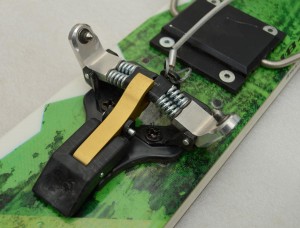
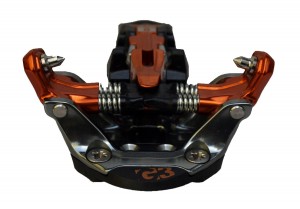
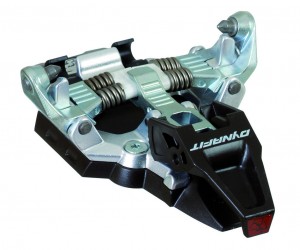
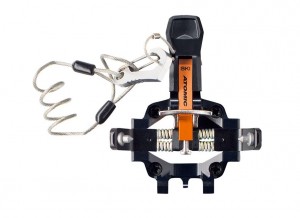
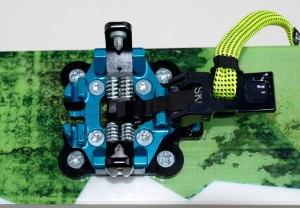
3 comments
1 ping
Hi Craig! I’d suggest noting which boot you are using to judge the ease-of-entry. This subjective measurement varies greatly with different boots and even their condition. Some advanced toes (not mentioned above) even have mechanisms to tune the spring-trigger mechanism based on your boot. Sole modification is also typically possible to alter this characteristic.
Good point but the variability available among telemark boots with inserts is much less – half dozen models versus several dozen for AT boots. Anyway, for the record the boots used for evaluating were a pair of Scarpa TX and Crispi Shiver. The Shiver’s definitely released easier but the relative ease of release was the same. IOW – Ion wouldn’t let go when locked, TTS could.
“…cable system you’re matching with the toe, the subject of the next post in this series on DIY telemark tech bindings.”
Could you include some diy ideas for matching some cable systems dedicated for tech toes (mounted to the ski under the foot) for use with nn75 like supertelemark from rottefela or only front parts of standard cable bindings? I was wondering about something like this for use witch leather or light plastic boots for touring
[…] Related Posts DIY 2-pin Tele Chronicles: State of the Art DIY 2-pin Tele Chronicles: Picking your toes […]